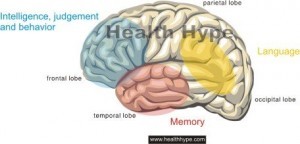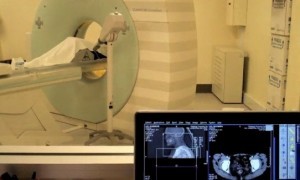How Strokes, Parkinson’s & Alzheimer’s Disease Are Different
As people are living longer, a number of chronic conditions that affect the brain are now being more frequently seen. Not all these conditions are isolated to the older age groups, but it is more likely to affect people over the age of 60 years. These conditions that are often confused and misunderstood in how it affects the brain structure and function. Some develop gradually while others strike suddenly with no previous warnings. The effects may be minimal in some instances and even reversible to some degree, while others can be severely debilitating and even life threatening depending on the nature of the condition.
The brain is mainly composed of nerve cells (neurons) and supporting tissue. As with any part of the body, the brain is prone to a host of diseases and disorders. A brain stroke, Parkinson’s disease and Alzheimer’s disease are three common neurodegenerative conditions in the US that are seen mainly among the elderly. It may have some degree of similarity in terms of certain symptoms and disease processes, but each is a separate condition that differs to a large extent.
Damage to the Brain

The nature of the disease differs in brain stroke, Parkinson’s disease and Alzheimer’s disease. While a brain stroke is well understood, the exact reasons for conditions like Parkinson’s disease and Alzheimer’s is poorly understood. Even the reason why the brain function is affected is not clear in these conditions but there are several theories based on the findings of the structural changes in the brain discovered during post-mortem examination coupled with the response to certain drugs.
- Brain stroke is where a portion of the brain tissue dies due to a compromised blood supply. It is either ischemic when a clot blocks the blood flow or hemorrhagic when the blood vessel ruptures.
- Parkinson’s disease is a condition where clumps of proteins occur in the brain tissue and there may be loss of the dopamine-producing nerve cells in the brain.
- Alzheimer’s disease is a condition where there is the formation of tangles of protein and plaques in the brain along with death and destruction of nerve cells in the brain.
Causes and Risk Factors
A family history of any of these conditions is one of the major risk factors. But genetic factors are a stronger risk for Parkinson’s disease and Alzheimer’s disease than for a brain stroke. Age and lifestyle seems to play a significant role in all three conditions. With a stroke, one of the main problems is atherosclerosis – where fatty plaques narrow the arteries supplying blood to the brain. High blood pressure, high blood cholesterol, cigarette smoking, obesity and diabetes are some of the main risk factors.
With Parkinson’s disease, genetics, age and exposure to environmental toxins are the main risk factors. Men are at a greater risk and the condition seems to be more prevalent in certain countries probably indicating a lifestyle component, possible such as diet. Alzheimer’s disease shares many of the major risk factors with both a brain stroke and Parkinson’s disease. But it has been interesting to note that mental activity may reduce the risk of the condition whereas it is not as effective as a preventative measure with the other two conditions.
Early Signs and Symptoms
The early symptoms can vary greatly between each of the condition. In fact, it can vary significantly from one patient to another with the same condition. And often there may be no symptoms in the early stages. With Parkinson’s disease and Alzheimer’s disease, the symptoms tend to develop gradually and progress over a period of time. On the other hand with a stroke, the symptoms often tend to start suddenly and progress rapidly. There may be preceding episodes of stroke-like symptoms that pass after a few minutes – this is known as transient ischemic attacks (TIAs).
- Stroke – tingling, numbness, weakness and/or paralysis on one side of the body, fainting, confusion.
- Parkinson’s disease – resting tremor (pill rolling tremor).
- Alzheimer’s disease – forgetfulness or poor memory.
Since all these conditions affect the brain, the symptoms can overlap to some degree. However, it may occur at different stages of the condition. For example, memory problems are usually seen early in Alzheimer’s disease and late in Parkinson’s disease.
Tests and Scans for Diagnosis

There is no conclusive blood test to confirm the diagnosis of a stroke, Parkinson’s disease or Alzheimer’s disease but it can be useful in excluding other conditions that causes similar symptoms. Imaging studies like a CT scan and MRI are useful for diagnosing a stroke in conjunction with neurological findings during a physical examination. These scans may also be useful in excluding a stroke when a patient has Parkinson’s disease or Alzheimer’s disease.
However, there is no test that can diagnose Parkinson’s disease. Instead a doctor will diagnose Parkinson’s disease based on the signs and symptoms present at the time. A diagnosis of Parkinson’s disease may also be confirmed when patients respond to medication like levodopa. Various physical, neurological and neuropsychological tests may also be used to diagnose Alzheimer’s disease when other conditions have been excluded. There is hope that brain imaging may be used to more conclusively diagnose Alzheimer’s disease in the future.
Medication And Surgery
The treatment of a stroke, Parkinson’s disease and Alzheimer’s disease varies greatly although there is some degree of overlap. The focus of any treatment program for a stroke is to restore normal blood flow to the brain as soon as possible. This may require surgery. With Parkinson’s disease, surgical procedures like deep brain stimulation may be considered in cases that are deteriorating and not effectively responding to Parkinson’s drugs. There are no viable surgical options for Alzheimer’s disease as yet.
Medication for a brain stroke includes anti-clotting agents like aspirin or tissue plasminogen activator (TPA). For Parkinson’s disease, drugs like levodopa is the mainstay of treatment. Other drugs for Parkinson’s disease includes monoamine oxidase inhibitors (MAO inhibitors), anticholinergic drugs, catechol O-methyltransferase (COMT) inhibitors, anticholinergic drugs and amantadine. Drug options for Alzheimer’s disease is limited. Cholinesterase inhibitors and memantine are some of the drugs that may be used.
Patients with any of these conditions may benefit from physical therapy and occupational therapy, to varying degrees.
Prevention Measures

Apart from a brain stroke, preventative measures are not always as definitive for Parkinson’s disease and Alzheimer’s disease. General measures like regular exercise, a healthy diet and stress management may be helpful for all conditions. With a stroke, measures such as losing weight, controlling blood pressure, stabilizing the blood glucose levels in diabetes and reducing blood cholesterol levels are particularly useful. Certain drugs like anti-clotting agents can also help prevent an ischemic stroke although it may worsen a hemorrhagic stroke.
There are no known preventative measures for Parkinson’s disease. Some research studies have shown that caffeine and cigarette smoking may play some role in reducing the risk of Parkinson’s disease, but it is not advisable to increase your caffeine intake or to start smoking. Given the host of possible causes of Alzheimer’s disease, exact preventative measures have not been identified. Apart from adopting a generally healthy lifestyle, mental exercises and other intellectual activities may offer some degree of protection against developing Alzheimer’s disease. Recent studies have revealed certain foods that reduce Alzheimer’s disease risk.





